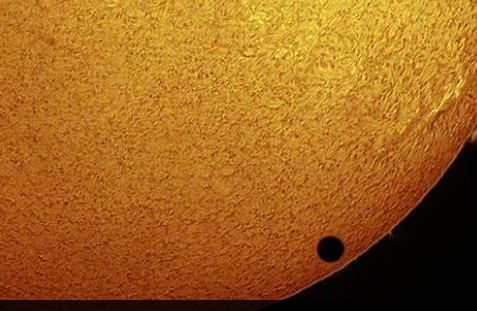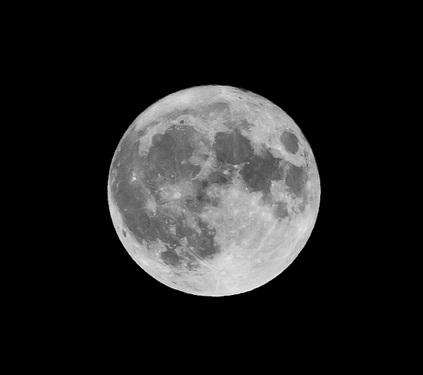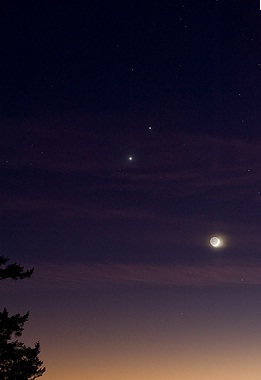Parts of Country Get to See Meteor Shower
 Thursday, August 15, 2019 at 10:16AM
Thursday, August 15, 2019 at 10:16AM One of the last chances to see this one...
Based in Atlanta, GA - Rick Limpert is an award-winning writer, a best-selling author, and a featured sports travel writer.
Named the No. 1 Sports Technology writer in the U.S. on Oct 1, 2014.
 Thursday, August 15, 2019 at 10:16AM
Thursday, August 15, 2019 at 10:16AM One of the last chances to see this one...
 Tuesday, July 10, 2018 at 2:18PM
Tuesday, July 10, 2018 at 2:18PM Many Eastern Iowans and others across the Midwest saw something streak across the sky Sunday night that made them take a second look.
It was taken just after 8:30 p.m. during a softball banquet in Riceville. In the video you can see the bright white light of a meteor. The meteor was so bright it could been seen even during the daytime, which actually classifies it as a fireball. This means the meteor was brighter than the planet Venus.
One Dubuque resident, Samantha Stevens had her eyes in the sky at the time and described to us what she saw. "I saw a big flash, and it was like a big green streak, and then another flash and then it like broke off into a million little pieces," said Stevens.
Link:
https://www.facebook.com/stacy.ostertmiller/videos/10216194528673480/
 Tuesday, June 5, 2012 at 2:32PM
Tuesday, June 5, 2012 at 2:32PM 
I hear a lot of people are planning to watch the transit of Venus on Tuesday (June 5), but it's extremely important that prospective viewers be warned to take special precautions (as with a solar eclipse) to view the silhouette of Venus against the brilliant disk of the sun.
For the United States and Canada the transit will begin when the dark disk of Venus first touches the outer edge of the sun, an event that astronomers call Contact I. From the Eastern U.S. and Eastern Canada, Contact I should occur around 6:03 p.m. EDT. From the Western U.S. and Western Canada, Contact I should occur around 3:06 p.m. PDT.
It will take about 18 minutes for the black disk of Venus to move completely onto the sun's face; ultimately bringing its black disk just inside the sun's upper left edge. If you imagine the sun's disk as the face of a clock, Contact I will occur between the 11:30 and 12 o'clock position. Venus will then progress along a track that will run diagonally from the upper left to the lower right.
Eye safety is always a prime concern when dealing with the sun. Observing a transit is a lot like studying sunspots because, after all, you are looking at a dark spot on the sun.
So, the safest way to view the transit is to construct a so-called pinhole camera. A pinhole, or small opening, is used to form an image of the sun on a screen that is placed about three feet behind the opening.
Binoculars or a small telescope mounted on a tripod can also be used to project a magnified image of the sun onto a white card. Just be sure not to look through the binoculars or telescope when they are pointed directly at the sun! Venus should appear as a distinct, albeit tiny dot on the projected image.
A variation of the pinhole theme is the "pinhole mirror." To make one, cover a pocket mirror with a piece of paper that has a quarter-inch hole punched in it.
Projecting the sun’s magnified image through binoculars, or better yet a telescope, on to a white card or screen is relatively safe and can be used for group viewing. For serious transit observing, a telescope with a full-aperture solar filter is much better.
You should never look at the sun directly through your telescope, even through your finder scope. It is strongly advisable to cover the finder before the transit, so as to avoid looking through it accidentally.
 Saturday, May 5, 2012 at 8:41PM
Saturday, May 5, 2012 at 8:41PM 
We are slated to have a Super Moon tonight and tomorrow morning.
What is a Super Moon?
A Super Moon is when the moon will be at its closest point to the Earth all year — appearing 14 percent bigger and as much as 30 percent brighter than other full Moons of 2012, according to NASA. Technically, it’s a perigee moon, which occurs when the moon reaches the nearest point in its oval orbit.
 Monday, September 20, 2010 at 6:42AM
Monday, September 20, 2010 at 6:42AM Catch Jupiter this week in the night sky. It won't be that big or bright again until 2022. Jupiter will pass 368 million miles from Earth late Monday, its closest approach since 1963. You can see it low in the east around dusk. Around midnight, it will be directly overhead. That's because Earth will be passing between Jupiter and the sun, into the wee hours of Tuesday.
The solar system's largest planet already appears as an incredibly bright star — three times brighter than the brightest star in the sky, Sirius. The only thing brighter in the night sky right now is our moon. Binoculars and telescopes will dramatically improve the view as Jupiter, along with its many moons, rises in the east as the sun sets.
"Jupiter is so bright right now, you don't need a sky map to find it," said Tony Phillips, a California astronomer under contract with NASA. "You just walk outside and see it. It's so eye-catching, there it is."
Phillips urges stargazers not to give up if it's cloudy Monday night. Jupiter will remain relatively close for many weeks, he noted, providing good viewing opportunities for some time. And for those who are early risers instead of night owls, Jupiter will be visible setting in the west just before sunrise.

